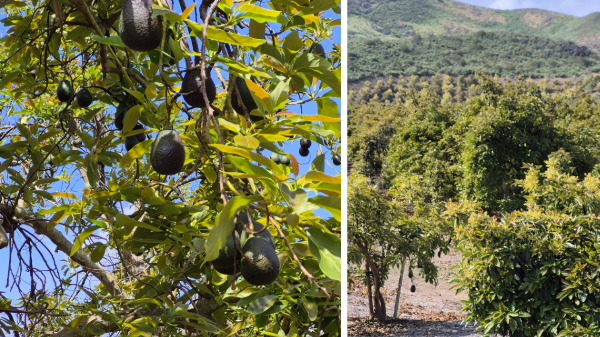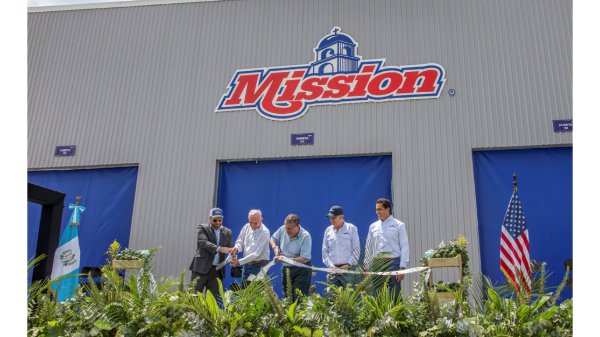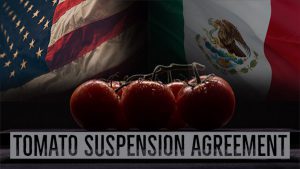Welcome to Blue Book!
Are you ready to join the thousands of companies who rely on Blue Book to drive smarter decisions? View our plans and get started today!
Still have questions? We’d love to show you what Blue Book can do for you. Drop us a line– we’ve been waiting for you.

Photos by Taryn Pfalzgraf
CAMARILLO, CA – California expects the largest avocado crop in five years in 2025, and as part of showing that off, Blue Book was invited to a grove tour last week.
I was among trade and legacy media touring Cam Lamb Farms BB #:326849 in Camarillo, CA, through the folks at Irvine-based California Avocado Commission BB #:145028 and Minneapolis, MN-based marketing agency Curious Plot.
The farm was a wonderland of trees, both avocado and lemon. The avocado trees were the main attraction, heavy with fruit in various stages of growth. The groves are home to Hass, Lamb Hass (a cross between a Gwen and Hass, bred during a trial at the farm), and GEM avocados. Hass trees are taller while GEMs are more squat, yet their size allows for more trees per acre.
The Lamb family, descendants of the area’s original Camarillo family (the town was named after them) are now in their sixth generation. John Lamb spearheads operations, with a hand from his brothers Robert (Bert) and David, and Bert’s daughter, Maureen Lamb Cottingham. Cottingham returned to the family farm a few years ago and will take the reins when her uncles and father retire. (An interview with Maureen Cottingham will appear in Blueprints in the weeks to come.)
Here are my top five interesting facts I learned during this amazing experience. And a note: in case anyone isn’t sure, Hass rhymes with sass. Yep, I was saying it wrong.
1) Hass trees are alternate bearing, meaning each year only part of the fruit will mature, resulting in uneven harvests. Growers hoping to have a more even distribution can “girdle” limbs on half the tree, which involves scoring or cutting into the bark. This causes the limbs to produce more flowers and fruit. The following year, growers can girdle the other half for higher fruiting, thus achieving more consistent harvests every year rather than less one year and more the next.
2) There’s been a bit of confusion about the newer GEM avocado. Some have spelled it in caps, others as Gem. Well, all caps is correct: the name is an acronym of the variety’s developer, Gray E. Martin. Martin cultivated this particular avocado from a Gwen seedling back in the 1980s on his family farm in Seville, CA.
3) This season is supposed to be robust, with the California Avocado Commission estimating the entire state will produce as many as 375 million pounds of avocados. Cam Lamb Farms hopes to contribute about 1.5 million pounds to this sum from its 300 acres of avocados.
4) Avocados are so versatile! They’re fantastic in many dishes from tried-and-true guacamole to a wide range of appetizers (like a lemon and herb risotto cake with avocado crema), salads, and entreés galore, as well as desserts—including an astonishing White Chocolate-California Avocado Tiramisu courtesy of the Pearl District restaurant in Westlake Village.
5) Pretty much anyone (yours truly included) can make a memorable and delicious guacamole. Whether you like just a few ingredients or many, it’s almost impossible to run afoul of deliciousness. With three other tour participants, we made an outstanding guacamole called ¡Ay Caramba! and won “Most Creative” from the Cam Lamb judges. We included varying amounts of avocados, of course, along with lemon juice, cilantro, salt, chili powder, a dash of Tajin, onion, small mango chunks, and even shaved chocolate—and it was fantastic.
All in all, this tour was a dream, inspired by nature’s bounty. Here’s hoping this year’s bumper crop means a few shipments of California avocados might make it all the way to the Midwest—though demand generally keeps most supply in the western states—despite the best efforts of about 3,000 growers across the Golden State.








